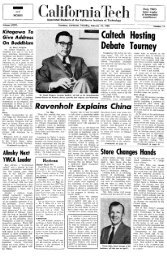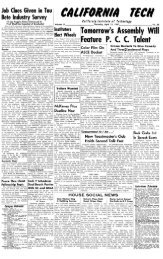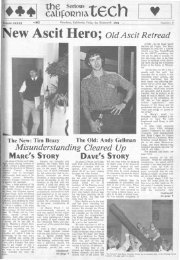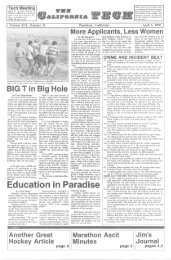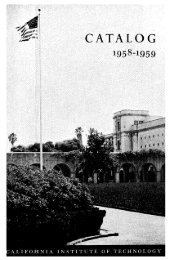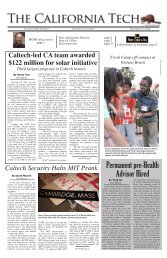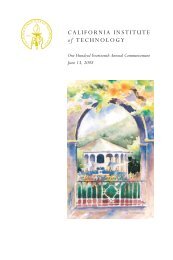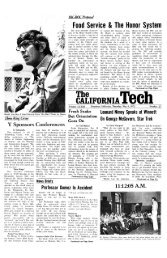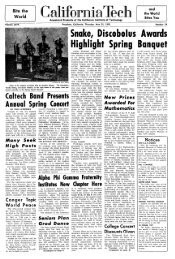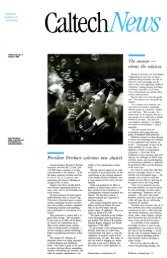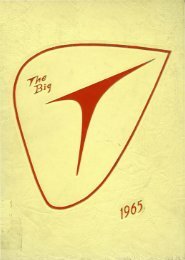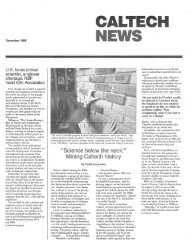PDF (1941) - CaltechCampusPubs
PDF (1941) - CaltechCampusPubs
PDF (1941) - CaltechCampusPubs
You also want an ePaper? Increase the reach of your titles
YUMPU automatically turns print PDFs into web optimized ePapers that Google loves.
118<br />
CALIFORNIA INSTITUTE OF TECHNOLOGY<br />
The main outlets for the graduates in physics of the Institute are<br />
positions in colleges and universities, in the research laboratories of<br />
the government, and in the increasing number of industrial research<br />
laboratories of the country. There is at present a rapidly growing<br />
demand for physicists in the National Defense activities of the government<br />
and many graduates are entering upon such work.<br />
ENGINEERING<br />
Courses are offered at the Institute in Civil, Mechanical and<br />
Electrical Engineering. There are also courses in Aeronautics and<br />
Applied Chemistry, which are described under the respective heads<br />
of Aeronautics and Chemistry.<br />
The plan of instruction in Engineering embodies a four-year course<br />
for the degree of Bachelor of Science, and a fifth year of graduate<br />
study, quite definitely outlined within the selected field, leading to<br />
the degree of Master of Science in Civil, Electrical, or Mechanical<br />
Engineering. The fifth year in Aeronautics or Meteorology leads to<br />
the degree of Bachelor of Science in Aeronautics or Meteorology; the<br />
sixth year, to the degree of Master of Science in Aeronautics or<br />
Meteorology. Additional work is offered leading to the degree of<br />
Doctor of Philosophy. The civil, mechanical and electrical engineering<br />
groups are not separated until the third year, all students following<br />
the same program of the fundamental subjects, mathematics,<br />
physics and chemistry, supplemented by their general applications<br />
in surveying, mechanism, mechanics, strength of materials, direct<br />
and alternating currents, heat engines and hydraulics. The divergence<br />
between the different branches occurs in the third and fourth<br />
years when the study of the professional subjects of specialized<br />
nature is introduced. Subjects in the humanities-English, history,<br />
and economics-are included in each year of the curriculum.<br />
The four-year undergraduate courses in engineering are well balanced<br />
foundations for entrance into many opportunities within the<br />
respective fields. However, those students who wish to prepare for<br />
careers in the more intensive technical phases of engineering and who



